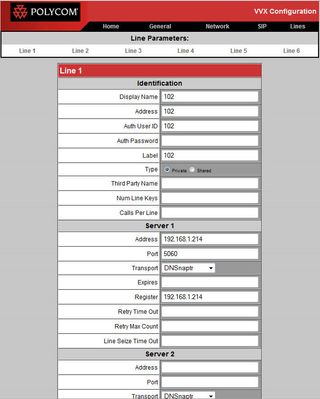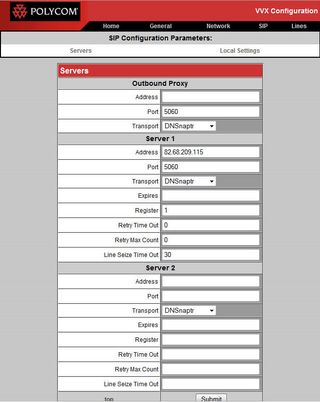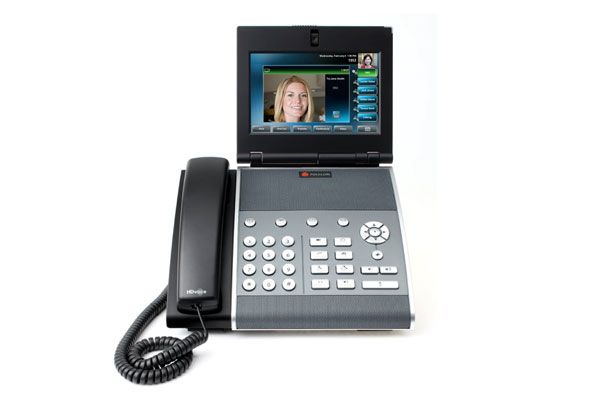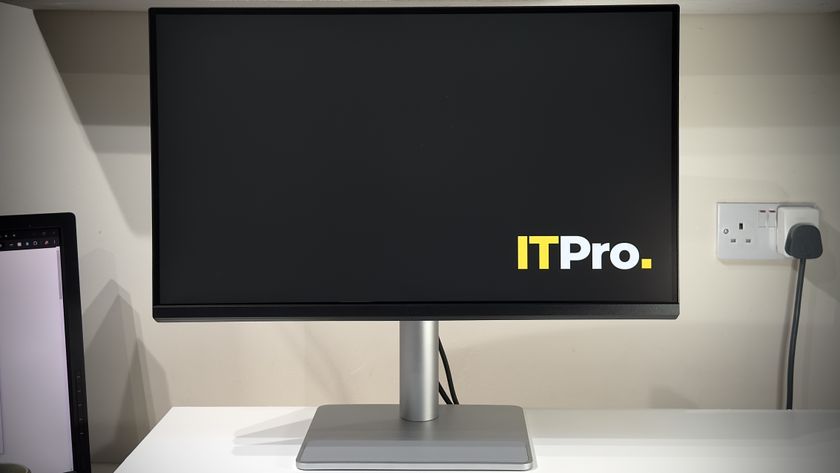You'll need plenty of bandwidth for video calling. Full screen 352 x 288 (CIF) resolution video requires up to 768kbit/s for data transfer in addition to standard network overhead. This won't be a problem even on a 10/100 local network, However, if you want to use these phones to make voice calls over a company WAN or individual VPN link to a remote location, you'll need a high speed synchronous net connection bandwidth depends on the number of phones you'll be using simultaneously. We recommend allowing 1Mbit/s synchronous bandwidth per phone.

Caption: Configuring each of the VVX 1500's six lines simply requires you to assign a user ID number to call and a display name to identify it.
We tested the phones over our Asterisk IP telephony system. Configuration was simple using the phone's web interface, which was clean, uncluttered and easy to navigate. We entered the IP address and port number of our SIP server in the phone's SIP settings. After that, all we had to do was go to the phone's Line settings and enter the extension number and display name we wanted for each line. Changing the settings on each configuration page forces you to sit through an extended two-minute reboot, but there's so little to change that this is a minor irritation. Voice calls worked perfectly, with excellent audio quality through both the handset and the built-in speaker. This is hardly surprising given the ubiquity of Polycom's conference phones.
We were unable to get the VVX 1500 to make video calls via our SIP server. This is a widely reported issue. Currently, the VVX 1500 is not listed as a supported video phone under Asterisk, the world's most widely used SIP server, or any related FreePBX derivatives. See Polycom's Interoperability Partner Matrix for a list of the major platforms and hosted service providers that fully support it - there aren't too many at the moment.

You only need to give the phone a few parameters to get it talking to your SIP server, although most servers currently only support voice calling for the VVX 1500.
Fortunately, this in no way prevents administrators from implementing video calling for VVX 1500 users. The best approach is to add a XML contacts directory to your TFTP server, containing the name and IP address of the video phones on your network. The VVX 1500 can search for and load your contacts from the server at boot time, if your DHCP server supports this.
Verdict
The VVX 1500 has a great range of features and is easy to configure. Full support is currently limited under most SIP server platforms, but video call routing is easily handled via a TFTP contacts directory, so this doesn't put too much of a crimp on its usefulness. Unfortunately, at over £650 (exc. VAT), it's painfully expensive compared to any IP video phone on the market short of Cisco's £1,480 7985G.
If you have the budget, the VVX 1500 is a stylish and easy to use video phone that offers an elegant means of face-to-face communication between key members of your organisation. However, at this price, we have to wonder how many businesses are prepared to splash out for several of these expensive IP video phones, despite their obvious merits.
Display: 7in, 6 lines colour LCD
Camera: 2 megapixel camera
Video: CIF (352 x 288) or SIF (352 x 240) video resolution
Ports: 10/100/1000 Ethernet, 10/100/1000 Ethernet pass-through, RJ-9, USB, 3.5mm line out
Audio codecs: G.711 (A-law and ?-law), G.729AB, G.722, G.722.1, G.722.1C
Video codecs: H.263, H.263+, H.264
Network protocols: SIP, SDP, IETF SIP (RFC 3261 and companion RFCs), DHCP, SNTP, FTP/TFTP/HTTP/HTTPS server-based central provisioning for mass deployments, QOS, NAT (static configuration and “Keep-Alive” SIP signaling), RTCP and RTP support, IPv4, TCP, UDP, DNS-SRV
Security: SRTP media encryption, TLS, HTTPS secure provisioning, support for signed software executables
Size: 380 x 250 x 210mm
Weight: 2.5kg
Warranty: one year RTB
K.G. is a journalist, technical writer, developer and software preservationist. Alongside the accumulated experience of over 20 years spent working with Linux and other free/libre/open source software, their areas of special interest include IT security, anti-malware and antivirus, VPNs, identity and password management, SaaS infrastructure and its alternatives.
You can get in touch with K.G. via email at reviews@kgorphanides.com.














